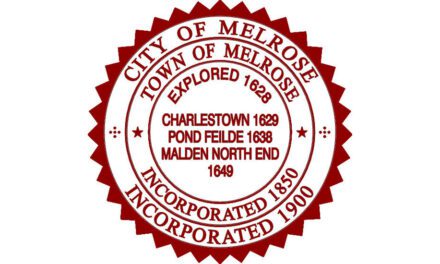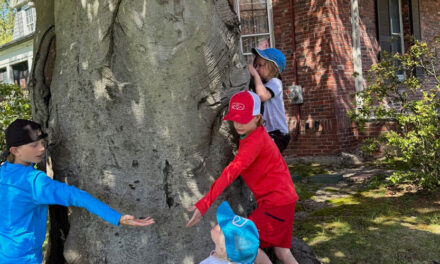Vote set for Monday, May 8
By DAN TOMASELLO
LYNNFIELD — The price tag to permanently treat PFAS for the Lynnfield Center Water District is $17 million, Superintendent John Scenna said during a Board of Water Commissioners meeting on April 26.
LCWD ratepayers will be voting on the permanent PFAS treatment system during the Annual Meeting on Monday, May 8, beginning at 6:30 p.m. in the Al Merritt Media and Cultural Center, 600 Market St.
Scenna said the Annual Meeting’s warrant includes Article 13, which will ask LCWD ratepayers to approve joining the Massachusetts Department of Environmental Protection’s Drinking Water State Revolving Fund Loan Program. He said the loan will be used to finance the cost for the new Glen Drive water treatment plant that is currently being designed.
CDM Smith Project Manager Anne Malenfant said the revised Glen Drive water treatment plant’s design will allow iron, manganese and PFAS to be treated inside a single building. Ratepayers approved the $9.8 million LCWD capital program during the May 2021 Annual Meeting, which included the $6.3 million Glen Drive water treatment plant.
The new Glen Drive treatment plant was originally designed to treat iron and manganese, which has caused discolored water problems for a number of residents. Malenfant said LCWD officials were forced to overhaul the facility’s design in the wake of MassDEP implementing drinking water regulations in October 2021 that regulate the maximum contaminant level (MCL) for PFAS, which are man-made “forever chemicals” that can cause health problems.
MassDEP’s drinking water standard mandates that the minimum PFAS level be equal to or less than 20 parts per trillion (PPT), which equals one drop of water in 20 Olympic-size swimming pools.
The LCWD began testing for PFAS in September 2021. Malenfant said the results revealed that Station 2 on Main Street’s PFAS levels were above the 20 PPT requirement. As a result, ratepayers at a Special District Meeting in March 2022 approved funding a short-term PFAS treatment plan as well as begin laying the groundwork for a long-term solution.
AVANTech vessels began treating PFAS at Station 2 on Main Street as part of a pilot program earlier this year. Scenna recently noted during a “Town Talk” episode that the interim system has brought PFAS to “non-detect levels” that comply with MassDEP regulations.
Scenna said the Glen Drive water treatment plant’s revised $17 million price tag will cost ratepayers an additional $62 per year.
“That will be an additional $15 per bill,” said Scenna. “There are four bills a year. That is because of the SRF Program. The SRF Program is a competitive process, and we competed against hundreds of applications across the state. Our application was positively received because we have a short-term plan, a need and a long-term plan.”
Malenfant said the Environmental Protection Agency recommended in March that the federal MCL for PFAS be 4 PPT.
“It is anticipated it will go into effect in December 2026,” said Malenfant. “The EPA is taking comments before finalizing the rule.”
While Malenfant said Station 4 is currently below MassDEP’s PFAS regulations, she said the Glen Drive station’s PFAS levels are higher than the EPA’s proposed federal regulation.
“It makes sense to bring PFAS treatment to Glen Drive and bring water over from Station 2 to Station 4 to treat both of them at a single location,” said Malenfant.
Scenna said the Sagamore Spring Golf Course easement that the LCWD received last fall will be used to connect the Main Street and Glen Drive stations to ensure PFAS is treated.
Malenfant said the water treatment plant’s design is 60 percent complete and the final design will be finished this fall.
“Construction will start in early 2024,” said Malenfant. “It will take about 18 months to construct the facility, so we are looking at having it completed in 2025.”
If the ratepayers reject Article 13, Scenna said the cost to build the PFAS treatment component of the new plant will be going up significantly due to higher interest rates.
“In today’s market, borrowing $17 million will cost this district $24 million,” said Scenna. “The SRF Program will save the district $7 million. That is about $80 a year per customer and $1,600 over the life of the loan’s expenditure.”
Scenna urged ratepayers to approve joining the SRF Program.
“Not addressing PFAS is not an option,” said Scenna. “We either address it before the pilot program expires in two-and-a-half years, or we shut the source down. We cannot exceed an MCL. This has to happen, and it will never be cheaper than it is today because of the SRF Program. This solves all of the problems in the district.”
In addition to the Glen Drive project, Malenfant said the capital program’s interconnection and Massachusetts Water Resource Authority (MWRA) supplemental water project is set to begin in the coming weeks. The LCWD’s interconnection project will allow the district to get supplemental water from the MWRA via Wakefield.
Scenna informed the Villager that the $17 million SRF Loan will cover the cost for the Glen Drive treatment plant while the $9.8 million previously appropriated will be used to finance the cost of the supplemental water project.
Reaction
Durham Drive resident Ellen Crawford asked if the LCWD’s existing Glen Drive facility will be staying put.
Scenna said yes.
“The new building will be located behind the existing building,” said Scenna.
Merrow Road resident Ken MacNulty, who is the president of the Ipswich River Watershed Association’s Board of Directors, inquired if the LCWD could potentially receive more supplemental water from the MWRA if the need arises.
Malenfant said the supplemental water project has been designed to take in 250 gallons of water per minute.
“That is what is needed for a fifth source,” said Malenfant. “It could go up to 575 gallons per minute, but that would require Wakefield to upsize the system’s pipes to get that water.”
In order for the LCWD to receive supplemental water from the MWRA, Malenfant said the Water Resources Commission (WRC) is required to review the project to make sure it complies with the Interbasin Transfer Act (ITA). After the WRC signs off on the interconnection project, the MWRA Board of Commissioners, the State Legislature and the governor will need to approve it as well.
“We are going for the 575 gallons under the Interbasin Transfer Act because it’s a long process and we only want to do that once,” said Malenfant. “But the application submitted to the MWRA is for the 250 gallons per minute. That can be increased if needed.”
Scenna agreed.
“We would negotiate with the MWRA and would negotiate with Wakefield to bring in more water,” said Scenna.
Patrice Lane resident Patricia Campbell urged LCWD officials to make the presentation given during the Annual Meeting on Monday, May 8 clear and concise.
“Clarity is very important so there is complete understanding,” said Campbell.
In response to a question from Willowby Way resident Robert Look, LCWD Water Commissioners Chairman Joe Maney said the SRF Loan’s interest rate is zero percent over 20 years.
“If you borrow $9.8 million, you are paying back $15 million,” said Maney. “With the SRF Program, if you borrow $17 million, you are paying back $17 million.”
While Glen Drive resident Judy Freumeni said she read about the Glen Drive project in the newspaper, she was “a little disappointed the board didn’t have the courtesy to let the people on Glen Drive and the surrounding streets know about this meeting.”
Maney apologized to Freumeni for not notifying the neighborhood.
“We were certainly remiss there,” said Maney.
Scenna pledged to hold a neighborhood meeting with Glen Drive residents to discuss the project.
Freumeni said she was forced to install a water treatment system at her house because of discolored water problems caused by iron and manganese. She has to change the system’s filter once a month because she said it resembles “tar.”
“I hope all of this money will improve the water,” said Freumeni.
Maney sympathized with Freumeni’s discolored water issues.
“The only reason I ran to sit up here is to help the people in this part of town,” said Maney. “We get that it has been painstakingly slow. No one is more frustrated than us, but I can assure you that we are trying.”
After the discussion, the LCWD Board of Water Commissioners unanimously voted to recommend Article 13.




